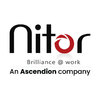
i
Coupa Software
Inc
Filter interviews by
Coupa Software Inc Interview Questions and Answers
14 Interview questions
Automating dynamic pages and finding XPaths involves using tools like Selenium and identifying unique attributes.
Use Selenium WebDriver to interact with dynamic elements on the page.
Identify unique attributes like IDs, classes, or other attributes to create stable XPaths.
Use relative XPaths to locate elements based on their relationship to other elements.
Regularly update and maintain XPaths to ensure they remain a...
Test case for a microservice scheduling messages
Verify that messages are scheduled correctly based on specified time
Check if messages are sent to the correct recipients
Ensure that messages are not duplicated or lost during scheduling
A product is a tangible or intangible item that is created and offered for sale.
Products can be physical goods, such as electronics or clothing.
Products can also be services, such as software or consulting.
Products are designed to meet a specific need or want of a customer.
Products go through a lifecycle of development, launch, growth, maturity, and decline.
Our product follows a microservices architecture with a combination of front-end, back-end, and database layers.
Utilizes microservices architecture for scalability and flexibility
Front-end layer handles user interface and interactions
Back-end layer manages business logic and data processing
Database layer stores and retrieves data efficiently
Communication between layers is done through APIs
Develop REST APIs for project functionality
Define endpoints for different functionalities (e.g. GET /users, POST /users)
Implement CRUD operations using HTTP methods (GET, POST, PUT, DELETE)
Use proper authentication and authorization mechanisms (e.g. JWT tokens)
Handle error responses and status codes appropriately (e.g. 404 Not Found, 500 Internal Server Error)
JVM stands for Java Virtual Machine, which is an abstract computing machine that enables a computer to run Java programs.
JVM is responsible for converting Java bytecode into machine code that can be executed by the computer's processor.
It provides a platform-independent execution environment for Java programs.
JVM manages memory, handles garbage collection, and provides security features for Java applications.
Examp...
Object-oriented programming concepts in Java
OOPs stands for Object-Oriented Programming
It is a programming paradigm based on the concept of objects, which can contain data in the form of fields and code in the form of procedures
Encapsulation, Inheritance, Polymorphism, and Abstraction are the four main principles of OOPs in Java
Example: Class, Object, Inheritance, Polymorphism, Encapsulation
Yes, it is a good idea to wrap FileInputStream and FileOutputStream in buffered writers and readers.
Buffered streams improve performance by reducing the number of I/O operations
Buffered streams also provide additional functionality like readLine() and newLine()
Buffered streams can be chained together for even better performance
Example: BufferedReader br = new BufferedReader(new FileReader(file));
Use stringBuilder for toString() method as it is faster and not thread-safe.
stringBuilder is faster than stringBuffer as it is not thread-safe
toString() method is used for converting an object to a string
If thread-safety is required, use stringBuffer instead
Example: StringBuilder sb = new StringBuilder(); sb.append("Hello"); sb.append("World"); return sb.toString();
The object must implement the hashCode() and equals() methods to be used as a key in a hashmap.
hashCode() method is used to generate a unique hash code for the object.
equals() method is used to compare two objects for equality.
Both methods are necessary for proper functioning of hashmap operations like put() and get().
Coupa Software Inc Interview Experiences
27 interviews found
Aptitude test of 85 min
(2 Questions)
- Q1. OOP concepts : - Inheritence , polymorphism
- Q2. DSA :- arrays , strings basic leetcode questions
I appeared for an interview in Mar 2025, where I was asked the following questions.
- Q1. Power of number and contiguous sub string
- Ans.
Determine the power of a number based on its contiguous substring representation and analyze its properties.
Definition of Power: The power of a number can refer to its representation as a contiguous substring, such as '123' being 123.
Contiguous Substrings: For a number '1234', the contiguous substrings include '1', '12', '123', '2', '23', '3', '34', '4'.
Power Calculation: The power can be calculated by evaluating each ...
- Q2. Aws , linux and load balancer question
I applied via LinkedIn and was interviewed in Apr 2024. There were 4 interview rounds.
Aptitude+3 easy to medium level coding questions
(1 Question)
- Q1. Linked List & DSA questions on strings
(1 Question)
- Q1. Resume + DSA questions
(1 Question)
- Q1. Non technical+ System design basics + DSA
Interview Preparation Tips
I appeared for an interview in Feb 2024.
(3 Questions)
- Q1. Questions on CV
- Q2. Questions on Experience
- Q3. Explain Product
- Ans.
A product is a tangible or intangible item that is created and offered for sale.
Products can be physical goods, such as electronics or clothing.
Products can also be services, such as software or consulting.
Products are designed to meet a specific need or want of a customer.
Products go through a lifecycle of development, launch, growth, maturity, and decline.
(4 Questions)
- Q1. Expalin Architecture of your product
- Ans.
Our product follows a microservices architecture with a combination of front-end, back-end, and database layers.
Utilizes microservices architecture for scalability and flexibility
Front-end layer handles user interface and interactions
Back-end layer manages business logic and data processing
Database layer stores and retrieves data efficiently
Communication between layers is done through APIs
- Q2. Printing pattern questions
- Q3. Different type of testing
- Ans.
Different types of testing include unit testing, integration testing, system testing, and acceptance testing.
Unit testing focuses on testing individual components or modules of the software.
Integration testing involves testing how different modules work together.
System testing tests the entire system as a whole.
Acceptance testing is done to ensure the software meets the requirements of the end users.
- Q4. Write test case around a microservice which schedules messages.
- Ans.
Test case for a microservice scheduling messages
Verify that messages are scheduled correctly based on specified time
Check if messages are sent to the correct recipients
Ensure that messages are not duplicated or lost during scheduling
Interview Preparation Tips
I have panic attacks and so that day I go5 mind freeze. So you can ask them to reschedule if something like this happens to you. I took the chance and blew it.
Skills evaluated in this interview
(2 Questions)
- Q1. Large Language Models
- Q2. RAG ,fine tuning
I applied via LinkedIn and was interviewed in Sep 2024. There was 1 interview round.
One program on ui automation
I applied via LinkedIn and was interviewed in Sep 2024. There was 1 interview round.
(1 Question)
- Q1. About yourself and background only
Interview Preparation Tips
I appeared for an interview in Oct 2023.
(1 Question)
- Q1. 3 leetcode/hackerrank medium questions and few aptitude questions
(2 Questions)
- Q1. Coding question(HashMap). Core programming language questions, OOPs, Situational questions, Behavioral questions, DSA(Hashmaps, Sets).
- Q2. Automation related questions. POM, WebDriver, Framework.
(2 Questions)
- Q1. Behavioral, Situational questions.
- Q2. UI, API, Performance, Architecture related questions.
(3 Questions)
- Q1. Domain questions, Coding questions(Array)
- Q2. How to automate dynamic pages, find XPaths.
- Ans.
Automating dynamic pages and finding XPaths involves using tools like Selenium and identifying unique attributes.
Use Selenium WebDriver to interact with dynamic elements on the page.
Identify unique attributes like IDs, classes, or other attributes to create stable XPaths.
Use relative XPaths to locate elements based on their relationship to other elements.
Regularly update and maintain XPaths to ensure they remain accura...
- Q3. Automation framework and execution.
(2 Questions)
- Q1. Coding questions(Sliding window)
- Q2. Situational, Behavioral questions
Interview Preparation Tips
Skills evaluated in this interview
I applied via Coupa and was interviewed in Aug 2024. There were 2 interview rounds.
15 MCQs of two different sessions. They also has session isolated timings.
3 Coding questions of easy and medium level.
Senior Artificial Intelligence Engineer Interview Questions & Answers
posted on 25 Jun 2024
I applied via Campus Placement and was interviewed in Dec 2023. There was 1 interview round.
(3 Questions)
- Q1. Classical ML Question-R1
- Q2. SQL Question + use-case-based classical ML question no DSA-R2
- Q3. HR round general discussion-R3
Interview Preparation Tips
- Stat Quest is all
- SQL Course Basic
Top trending discussions






Coupa Software Inc Interview FAQs
Some of the top questions asked at the Coupa Software Inc interview -
The duration of Coupa Software Inc interview process can vary, but typically it takes about less than 2 weeks to complete.
Tell us how to improve this page.
Coupa Software Inc Interviews By Designations
- Coupa Software Inc Software Engineer Interview Questions
- Coupa Software Inc Data Analyst Interview Questions
- Coupa Software Inc Software Developer Interview Questions
- Coupa Software Inc Senior Artificial Intelligence Engineer Interview Questions
- Coupa Software Inc Senior Software Engineer Testing Interview Questions
- Coupa Software Inc Data Scientist Interview Questions
- Coupa Software Inc Technical Lead Interview Questions
- Coupa Software Inc HR Recruiter Interview Questions
- Show more
Interview Questions for Popular Designations
- Software Engineer Interview Questions
- Associate Interview Questions
- Executive Interview Questions
- Business Analyst Interview Questions
- Associate Software Engineer Interview Questions
- Graduate Engineer Trainee (Get) Interview Questions
- Java Developer Interview Questions
- Data Analyst Interview Questions
- Show more
Overall Interview Experience Rating
based on 24 interview experiences
Difficulty level
Duration
Interview Questions from Similar Companies
Coupa Software Inc Reviews and Ratings
based on 105 reviews
Rating in categories
|
Senior Software Engineer
50
salaries
| ₹10.6 L/yr - ₹36.5 L/yr |
|
Software Engineer
48
salaries
| ₹15 L/yr - ₹26.4 L/yr |
|
Technical Support Engineer
37
salaries
| ₹5.1 L/yr - ₹14.8 L/yr |
|
Technical Support Specialist
35
salaries
| ₹3.3 L/yr - ₹8.5 L/yr |
|
Senior Software Engineer Testing
25
salaries
| ₹10.1 L/yr - ₹35 L/yr |

Softenger

Foray Software

Nelito System

Alchemy Techsol India
- Home >
- Interviews >
- Coupa Software Inc Interview Questions













